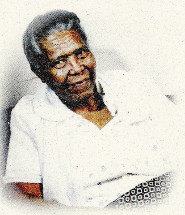Black History On a Street Where You Live
In honor of Black History Month, Bay Weekly tracks down unsung African Americans behind some street signs.
In our capital, many streets are footprints for the African American communities that developed in the late 1800s.
In Annapolis, King’s Apostle Holiness Church sits at the mouth of Kirby Lane, watching over a sleepy street dotted with residences. No more than 500 feet in length, the small stretch of pavement is named after a country teacher.
In post-Civil War Maryland, Ella Tongue Kirby lived in Mt. Zion, in Southern Anne Arundel County. A scant number of African American schools began in Maryland during that time, but qualified teachers were rare. Recruited as an educator in the 1870s, Kirby took her position seriously. Braving frigid Maryland winters and snowy roads, she trundled many miles from her home to her Tracy’s Landing schoolroom on horseback.
Brown Street cuts a path through a heavily trafficked section of Annapolis, running perpendicular to Westgate Circle. The road bears the name of William H. Brown, who came to Annapolis in the early 1880s, starting a grocery store and a fuel business. His first store stood at the corner of West Street and Spa Road. Brown owned his store, sharing the building with a Greek family named Leanos.
| William Brown opened a grocery store and fuel business in Annapolis in the early 1880s. |
“A Greek immigrant and William Brown of African descent owned and operated their businesses and coexisted for over 40 years on that corner,” Brown’s grandson Errol — a second-generation local historian — recalls.
Brown Street flows into Spa Road just south of the circle, but a quick detour around the man-made structure reveals a plaque dedicating the adjacent park to the Brown and Leanos families in tribute to two stores that operated separately, but equally.
In Calvert County, Christiana Parran Road cuts a paved swath through nearly two miles of farmland and woods in Chesapeake Beach.
Christiana Parran spent the late 19th and early 20th centuries amassing land in Calvert County.
“She was a post-mistress and a merchant,” says Kirsti Uunila, Calvert County’s historic preservation planner. “She accumulated a lot of wealth and land through collecting on the extension of credit to people.” The Parran family name continues to thrive throughout southern Maryland.
Stamper Court is the main road in an affordable housing community near Prince Frederick’s Main Street. The 400-foot span of asphalt bears the name of a teacher who fortified minds and built homes.
Graduating from Hampton Institute in 1940, Ailene Stamper moved to Calvert County to teach in a segregated school for African American children. Her goal was to have all her charges complete school and attend college. Her dogged commitment to education led to her appointment as interim principal of W.S. Brooks High School in 1943.
Though she had no biological children — and never married — Stamper fostered 10 children in her home, adopting one. Balking at the typical treatment of African American teachers, Stamper transformed a portion of her lands into a teacherage.
 |
Buying $10 worth of Prince Frederick land from Arthur and Lucretia Dowell, Stamper built Central Village. Originally a few rooms that she rented to fellow teachers, Central Village grew with Stamper’s Lands, forming a small community. The Maryland Historic Trust lists Central Village and the Stamper house as the only standing African American teacherages in Calvert County. The footprints of Central Village rest on Central Village Drive, off Dares Beach Road.
Stamper’s commitment to education and her vision of equal housing kept the teacher a local hero and inspiration until her death in 2004.
In a culture where local African American history has often been lost outside of oral history, road names are still a reliable way of discovering those who helped shape their communities. The next time you pass by, pay attention to those signs. They’re often the clue to overlooked figures who worked to better your community.
